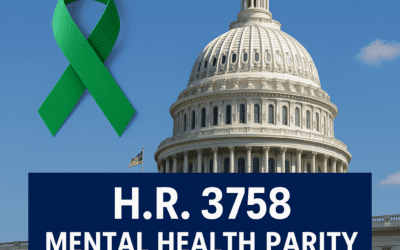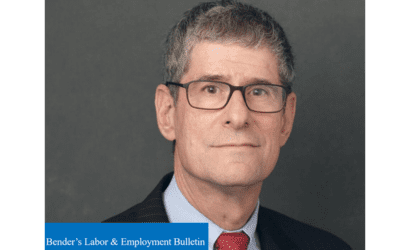More than 45 years after the Employee Retirement Income Security Act‘s passage, the reach of ERISA preemption is still being litigated, as illustrated by a July 28 ruling from the U.S. Court of Appeals for the Seventh Circuit.
In Halperin v. Richards,[1] the court addressed whether ERISA preempted state law claims brought by bankruptcy creditors against the directors, officers and others associated with a bankrupt company who were alleged to have “inflated the company’s stock value to conceal the company’s decline and to benefit corporate insiders.”
The court found that “ERISA does not preempt the plaintiffs’ claims against the directors and officers … who serve dual roles as both corporate and ERISA fiduciaries.”
Nonetheless, the court further ruled that ERISA preempts claims against the trustee of an employee stock ownership plan, or ESOP, and its stock valuation consultant based on a rationale that a finding of non-ERISA liability against those defendants “would interfere with the cornerstone of ERISA’s fiduciary duties—the exclusive benefit rule.”[2]
The case involved a paper company, Appvion Inc., and its ESOP.
The court recounted that Appvion’s stock valuation reflected unrealistic success at a time its revenues were sharply declining between 2012 and 2016.
The complaint alleged the stock valuation was artificially inflated to benefit the company’s “directors and officers, whose pay was tied to the ESOP valuations,” and that the scheme was aided and abetted by the ESOP trustee, Argent Trust Company, and by an independent appraiser, Stout Risius Ross LLC.
Appvion filed for bankruptcy in October 2017, and its creditors were given authority through a liquidating trust to pursue claims against the defendants to recover losses caused by the defendants’ conduct. The plaintiffs were the co-trustees of the liquidating trust.
All the defendants argued that ERISA preempted the state law claims, and the district court agreed.
However, the Seventh Circuit reversed as to the corporate officers and directors.
The court began its discussion by discussing the two prongs of ERISA preemption — complete preemption[3] under ERISA Section 502 and conflict preemption[4] under ERISA Section 514, which preempts “any and all State laws insofar as they may now or hereafter relate to any employee benefit plan” covered by ERISA.
Pointing out that anything can “relate to” anything else if that phrase is stretched to extremes, the Seventh Circuit explained that the U.S. Supreme Court has laid down guidelines as to the limits of preemption:
First, “[w]here a State’s law acts immediately and exclusively upon ERISA plans … or where the existence of ERISA plans is essential to the law’s operation …, that ‘reference’ will result in pre-emption.”[5] … Second, ERISA preempts a state statute or claim that, while not facially tied to ERISA, ‘governs … a central matter of plan administration’ or ‘interferes with nationally uniform plan administration.’ “[6]
The court also pointed out that parallel state laws that create alternative enforcement mechanisms to ERISA’s enforcement scheme are also preempted.[7]
However, the court determined that “the plaintiffs’ claims are not preempted because ERISA contemplates parallel state-law liability against directors and officers serving dual roles as both corporate and ERISA fiduciaries.”[8]
The court explained that Section 408(c)(3) of ERISA[9] permits corporate officers to dually serve as ERISA fiduciaries despite the existence of a tension between such dueling loyalties since ERISA’s exclusive benefit rule”[10] requires fiduciaries to act exclusively for the benefit of plan participants.
Those dual rules can create conflicts of interest, however.
Although the court found that corporate law claims would not be preempted, it acknowledged there is limited precedent supporting its finding, citing only one circuit-level case, Sommers Drug Stores Co. Employee Profit Sharing Trust v. Corrigan Enterprises Inc.[11] There, the U.S. Court of Appeals for the Fifth Circuit in 1986 based its ruling on the shareholder-director relationship that imposed duties independent of those required of a fiduciary under ERISA.
The court agreed with the outcome in Sommer Drug Stores, but observed:
Unlike Sommers Drug Stores, we do not lean heavily on the fact that the defendants’ corporation-law duties have independent state-law grounds. Virtually all state-law causes of action derive from independent state-law duties. Rather, what we find most important is that ERISA is written to invite, and certainly to tolerate, these specific parallel and independent duties—the directors and officers’ fiduciary duties to the corporation.[12]
The reason the Halperin ruling is so important is due to the Seventh Circuit’s recognition that as trustees of a liquidating trust, the plaintiffs lacked standing to bring claims under ERISA, since they were not participants, beneficiaries or fiduciaries of the ESOP plan — the keystone to invoking the right to remedies under ERISA Section 502(a),[13] which is the exclusive source of ERISA remedies.
That was also the reason why complete preemption was inapplicable, since a critical aspect of that branch of ERISA preemption requires the plaintiff’s eligibility to bring a claim under ERISA.[14]
However, those findings did not end the inquiry, because ERISA would preempt the plaintiffs’ claims if their claims related to plan administration.[15]
On that issue, the court addressed ERISA’s exclusive benefit rule, since ERISA contains numerous provisions, such as rules against prohibited transactions,[16] aimed at ensuring that plan fiduciaries avoid conflicts of interest and do not misuse plan assets.
Hence, the court expressed skepticism as to “any state-law attempt to saddle ERISA fiduciaries with other distracting and potentially conflicting duties to the corporate employer.”[17]
Nevertheless, the court acknowledged that ERISA contemplates dual loyalties and
invites conflicts of interest within ESOPs like the plan in this case. ERISA’s prohibited transaction rules ordinarily forbid deals between plans and other interested parties such as large stockholders, but ERISA specifically allows such deals for ESOPs.[18]
Courts have struggled to harmonize those conflicting duties, though, and imposed standards that have required plan fiduciaries to take steps to minimize the inherent conflicts that can arise when parties hold such dual roles.
But as the court pointed out in the most important passage in the ruling: “If parallel liability were preempted, the directors and officers would in effect cease to be corporate fiduciaries when carrying out their ERISA fiduciary roles.”[19]
The court added, “Preempting the plaintiffs’ corporation-law claims against the directors and officers would also thwart ERISA’s purpose to protect plan assets from misuse.”[20]
Further, since the bankruptcy creditors lacked standing to sue under ERISA, “foreclosing their state-law claims could leave them without recourse for a fraudulent ESOP valuation that enabled insiders to loot the company as it was sinking toward bankruptcy.”[21]
The court took a different view, though, as to the liability of the ESOP trustee, Argent, and the firm that valued the corporate stock price, Stout Risius Ross.
Unlike the directors and officers, neither the ESOP trustee nor the Stout firm owed any fiduciary duty to the corporation. Their duty was owed only to the ESOP.
Moreover, subjecting those parties to parallel liability could upset uniform regulation of the plans across state lines and could lead to an expansion of liability beyond ERISA’s exclusive remedial provisions.
This ruling illustrates the complexity of ERISA preemption and the law’s internal contradiction between the exclusive benefit rule and the parallel responsibilities of corporate officers and directors who are permitted by ERISA to also serve as plan fiduciaries.
However, though the decision in this case solves one problem, it leaves a second problem unresolved. It remains unclear how Argent and Stout could be sued, since the trustees lacked standing to bring an action under ERISA.
It also cannot be discerned from the opinion as to why ERISA Section 502(a)(2)[22] was not invoked to permit the plan participants and beneficiaries to sue the directors officers, ESOP trustee and valuation consultant in a single lawsuit under ERISA to restore to the plan the monies that were diverted by the officers and directors.
Presumably, the employees of Appvion — i.e., the plan participants — were among the creditors on whose behalf the liquidating trustees were pursuing claims.
Regardless, the ruling in Halperin v. Richards is an important and thoughtful approach to holding those who commit corporate misconduct to account. The reach of the ruling has implications beyond bankruptcy and opens the door to any creditor who would lack standing under ERISA to seek recourse for corporate malfeasance relating to ERISA-governed employee benefit plans.
Mark D. DeBofsky is a shareholder at DeBofsky Law.
This article was first published in Law360 on August 17, 2021.
The opinions expressed are those of the author(s) and do not necessarily reflect the views of the firm, its clients or Portfolio Media Inc., or any of its or their respective affiliates. This article is for general information purposes and is not intended to be and should not be taken as legal advice.
[1] Halperin v. Richards, 2021 U.S. App. LEXIS 22348, 2021 WL 3184305 (7th Cir. July 28, 2018).
[2] ERIS Section 404, 29 U.S.C. § 1104(a)(1)(A).
[3] 29 U.S.C. § 1132.
[4] 29 U.S.C. § 1144.
[5] 2021 U.S. App. LEXIS 22348 *7 (citing Gobeille v. Liberty Mut. Ins. Co., 577 U.S. 312, 319, 136 S.Ct. 936, 194 L.Ed.2d 20 (2016) (underlying citations omitted).
[6] Id. (citing Gobeille at 320) (underlying citations omitted).
[7] Id. (citations omitted).
[8] Id.
[9] 29 U.S.C. § 1108(c)(3).
[10] 29 U.S.C. § 1104(a)(1)(A)(i).
[11] Sommers Drug Stores Co. Employee Profit Sharing Trust v. Corrigan Enterprises Inc., 793 F.2d 1456 (5th Cir. 1986).
[12] 2021 U.S. App. LEXIS.
[13] 29 U.S.C. § 1132(a).
[14] 2021 U.S. App. LEXIS 22348 *17 (citing Aetna Health Inc. v. Davila, 542 U.S. 200, 210, 124 S.Ct. 2488, 159 L.Ed.2d 312 (2004))
[15] Id. (citing Gobeille, supra.)
[16] 29 U.S.C. § 1106.
[17] 2021 U.S. App. LEXIS 22348 *21.
[18] 2021 U.S.App.LEXIS 22348 at *21-*22 (citing the prohibited transaction rules – 29 U.S.C. § 1106(a)(1)(E) & (a)(2) – and the exception for ESOPs – 29 U.S.C. § 1107(b)(1) &
(d)(3)(A)(ii)).
[19] 2021 U.S. App. LEXIS 22348 *28.
[20] Id.
[21] Id. at *28-*29.
[22] 29 U.S.C. § 1132(a)(2).






